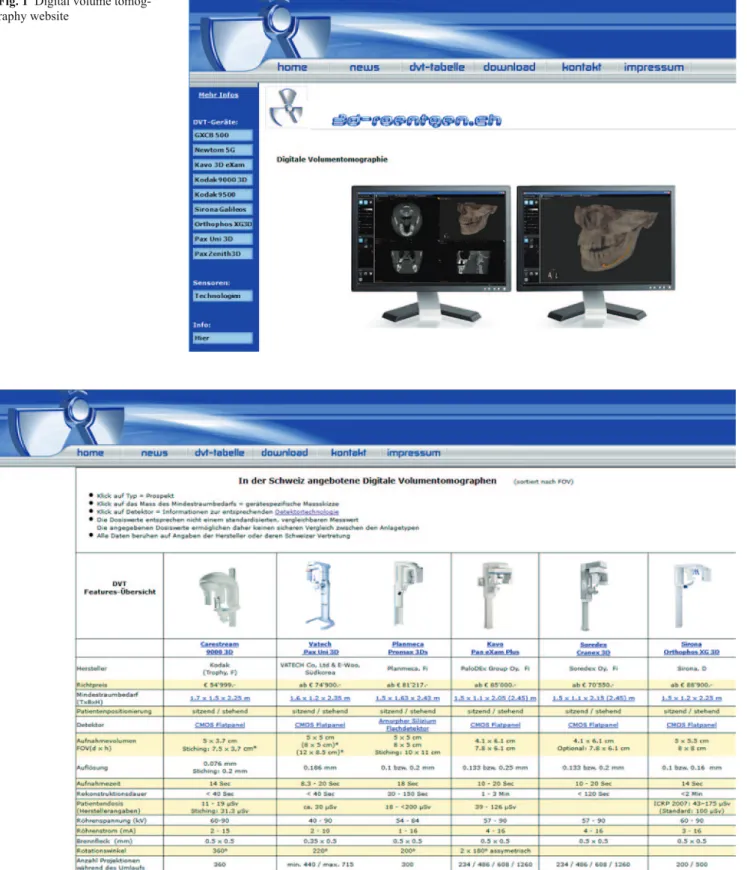1 3
New iN the web
Cone beam Computed tomography (CbCt; in German “Digitale Volumentomographie”; digital volume tomo-graphy) has become a standard tool in ear, nose, and throat (eNt) [1], maxillofacial [2], and dental X-ray in recent years [3]. Although its merits and potential are sometimes overestimated [4, 5], radiology departments increasingly add such a device to their equipment pool to satisfy their clientele’s demands.
the website that i present in this issue is based in Swit-zerland; the text is in German only (Fig. 1), but the tabular overviews should be understandable for the english speak-ing readers as well.
the site is run by a company that specializes in it tools and equipment for dental surgery; the information is an independent collection of information gathered from the various manufacturers.
“3D-Roentgen” lists technical data (Fig. 2) for all CbCt machines currently available in Switzerland. Furthermore, the data sheets/brochures for all these systems are available by direct links to the manufacturers’ websites.
i was positively astonished to see that, although the site is maintained by a commercial company, it is completely free of any advertising. “3D-Roentgen” provides the data but does neither display banners or any other kind of advertis-ing nor does it give recommendations for specific devices.
therefore, i can recommend this site as a good overview if you are interested in getting a CbCt machine for your practice or clinical department.
References
1. hodez C, Griffaton-taillandier C, bensimon i. Cone-beam imag-ing: applications in eNt. eur Ann Otorhinolaryngol head Neck Dis. 2011;128:65–78.
2. Krishnamoorthy b, Mamatha N, Kumar VA. tMJ imaging by CbCt: current scenario. Ann Maxillofac Surg. 2013;3:80–3. 3. Scarfe wC, Farman AG, Sukovic P. Clinical applications of
cone-beam computed tomography in dental practice. J Can Dent Assoc. 2006;72:75–80.
4. Secrétariat scientifique, Office fédéral de la santé publique: Stel-lungnahme der eidgenössischen Kommission für Strahlenschutz und Überwachung der Radioaktivität zur Digitalen Volumento-mographie. berne, Juillet 2010.
5. horner K. Cone-beam computed tomography: time for an evi-dence-based approach. Prim Dent J. 2013;2:22–31.
Clin Neuroradiol (2013) 23:255–256 DOi 10.1007/s00062-013-0238-6
Everything You Always Wanted to Know About Cone Beam
Computed Tomography: 3D-Roentgen.ch
C. Ozdoba
All screenshots are from www.3d-roentgen.ch (taken in June 2013).
C. Ozdoba () bern, Switzerland
e-mail: christoph.ozdoba@insel.ch
Received: 28 June 2013 / Published online: 18 July 2013 © Springer-Verlag berlin heidelberg 2013
1 3
256 C. Ozdoba
Fig. 1 Digital volume tomog-raphy website
